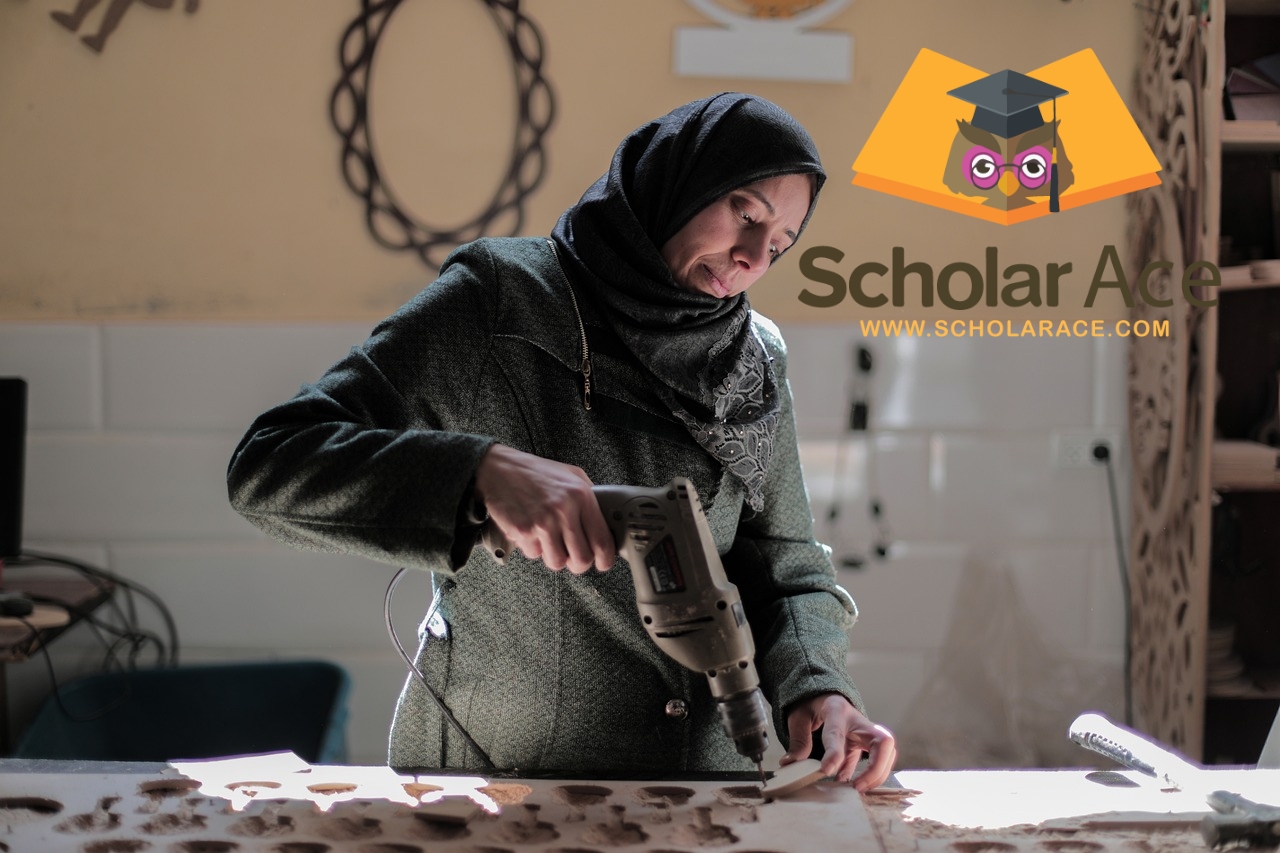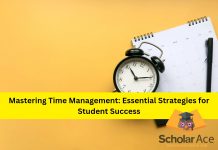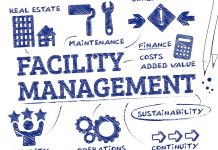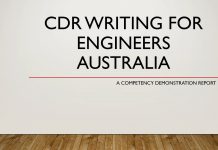Engineers Australia manages the Australia Skills Assessment, a pivotal gateway for engineers who aspire to launch their professional journey in Australia’s vibrant landscape. This meticulous evaluation process aligns engineer qualifications and competencies with the rigorous standards set by the country. The Competency Demonstration Report (CDR) – an exhaustive document that demands precise and strategic crafting – forms the heart of this evaluation.
The objective of this guide is to conduct a thorough exploration into the complexities surrounding Australia Skills Assessment, dissect the predominant causes that frequently result in rejection of CDR reports, furnish strategies for an accomplished submission, and finally, provide an expanded understanding within the context of the Australian immigration landscape.
Beat the competition with ScholarAce! Our expert team surpasses industry standards, providing CDR reports that stand out. Choose us for a service that’s a cut above the rest—because your future deserves nothing but the best.

Table of Contents
Comprehending the Australia Skills Assessment
Engineers Australia checks your qualifications, experience, and skills. It’s important for engineers who want to work in Australia. To begin, send an application with a detailed file.
In this file, include your education, work history, and the CDR report. Engineers Australia carefully examines these documents to ensure you meet Australian engineering standards and have the necessary experience according to their guidelines.
This stage is a crucial gateway for engineers wanting to move to Australia. It sets the tone for their journey, assessing their eligibility for the skilled migration program through a thorough evaluation.

Navigating the Australian Visa Application
The Australia Skills Assessment is part of the immigration process, not a standalone procedure. Aspiring engineers must navigate a rigorous application process, where the CDR report is crucial. A positive evaluation is essential for obtaining an Australian visa and accessing skilled employment opportunities.
Understanding the broader context of Australian immigration is vital. The skilled migration program targets individuals with high-level skills and relevant work experience, contributing to economic growth. The General Skilled Migration (GSM) program, including an engineer-specific pathway, operates on a points-based system considering factors like age, English proficiency, and professional background.
In the Australia Skills Assessment, engineers often rely on ScholarAce for assistance. ScholarAce’s team understands Engineers Australia’s guidelines, providing comprehensive support for crafting successful CDR reports that surpass stringent requirements.
Read More: Top Medical Schools In Australia For International Students
Navigating the Path to Skilled Migration: Understanding the Point System
The General Skilled Migration (GSM) program uses a points system to assess eligibility. Engineers must gather a minimum number of points for skilled migration qualification. The system considers various factors, with each contributing to an overall score. Age, English proficiency, education, work experience, and specific criteria for the nominated occupation are key elements.
Age is crucial, with the 25–32 bracket typically earning the most points. Proficiency in English, demonstrated through tests like IELTS or PTE Academic, also boosts scores. Education in engineering and relevant work experience add to point accumulation.

The CDR Report: Its Role in Facilitating Skill Migration to Australia
In the skill migration process to Australia, the CDR report commands central attention, as it stands as tangible evidence, a testament really, of an engineer’s competency and suitability for skilled employment in this country. Engineers Australia embarks on a rigorous evaluation and they scrutinise CDR reports against each element of competency defined within their Migration Skills Assessment booklet- an act that underscores not just thoroughness but also accountability.
The key to engineers pursuing their professional aspirations in Australia is a successful completion of the Australia Skills Assessment. As such, the CDR report plays an integral role in this transformative journey. Reach out to ScholarAce and let our experts help you writing a winning CDR report.
CDR Report
The CDR report goes beyond being a collection of documents; it strategically showcases an engineer’s skills and experiences. Crafting it meticulously involves including a Continuing Professional Development (CPD) list, three Career Episodes, and a Summary Statement. These components are crucial for aligning the applicant’s abilities with Engineers Australia standards, and guidelines are also a key part.
This section explores each component’s specific requirements, offering practical insights for engineers to effectively demonstrate their expertise. It provides tips on presenting achievements, aligning experiences with competency elements, and ensuring the document stands out as a testament to the engineer’s professional prowess and unique skill set in a competitive landscape
Read more: Top IELTS Advantages For Work, Study And Immigration
Australia PR Eligibility
The Australia Skills Assessment isn’t just a step for temporary employment, but it’s the foundation for Permanent Residency (PR). A positive assessment significantly enhances PR eligibility, allowing engineers to gather points based on factors like age, English proficiency, and work experience.
For engineers looking to establish a long-term professional presence in Australia, understanding the path from skills assessment to PR is crucial. This section provides a comprehensive overview of Australia’s point system and strategic guidance on accumulating points, serving as a valuable resource in this pursuit.
ScholarAce, with its affordable rates, aims to offer excellent CDR writing services for engineers aspiring to advance their careers in Australia. Our commitment to excellence and affordability makes us a valuable resource, playing a crucial role in the journey towards a successful Australian Skills Assessment and turning professional dreams into reality.

Unveiling the Point System
A Crucial Determinant: Age
In considering age, the point system rewards maximum points to applicants aged between 25 and 32, a recognition of young, skilled professionals’ significant contribution to Australia’s workforce.
Mastering English: A Proficiency in Language
Engineers must undergo language proficiency tests, such as IELTS or PTE Academic. Importantly, a high score on these evaluations augments an applicant’s total points, demonstrating the significant role of clear and concise interaction within this environment.
Degrees of Distinction: Educational Qualifications
The Australian immigration system holds individuals with robust academic backgrounds in high regard, recognizing the pivotal role education plays in molding skilled professionals; notably, educational qualifications, particularly those within engineering disciplines, significantly contribute to one’s overall score.
Learn more about: What Qualifications Are Needed To Teach Abroad In Australia?
Expertise: Demonstrated through Work Experience
An engineer enhances their eligibility for skilled migration by accumulating relevant work experience: years spent in skilled employment earn points, which acknowledge the practical expertise professionals contribute to Australia’s job market.
CDR Rejections: Identifying and Avoiding Common Pitfalls
The Australia Skills Assessment assigns significant importance to the CDR report. However, numerous applicants experience rejection of their reports. Aspiring engineers can navigate the assessment process successfully by conducting a thorough exploration of these common pitfalls, as this provides them with invaluable insights and empowerment.
Discover the ScholarAce advantage! We excel where others falter, offering superior CDR services that go beyond expectations. Elevate your career with the best in the business
Engineers Australia Guidelines are not being complied with
Engineers Australia’s guidelines form the basis for successful CDR submissions; not following these standards can lead to a negative assessment. This section explores the intricacies of these guidelines, offering engineers practical tips, like an arsenal, to precisely align their submissions with the rigorous criteria.
The resource includes examples, case studies, and a comprehensive checklist to ensure every aspect of your CDR report aligns with the guidelines. Understanding and mastering the nuances of formatting, language usage, and content expectations is crucial for a favorable evaluation.
Learn More: Competency Demonstration Report (CDR) Writing For Engineers Australia | Everything That You Need To Know
Career Episodes Lack Sufficient Detail
Career Episodes are more than just narratives; they provide insightful windows into an engineer’s professional journey. This section goes beyond the surface, explaining what detailed information entails with practical examples and guidance. Engineers can learn how to effectively present their contributions, responsibilities, and achievements in an engaging manner.
The emphasis on storytelling in this section underscores its pivotal role in creating a lasting impact through Career Episodes. Engineers can cultivate a keen understanding of crafting narratives that engage not only with technical details but also with the assessor.

Ethical Concerns: A Closer Examination of Plagiarism
Highlighting the importance of originality and authenticity in CDR submissions, this guide delves into its ethical aspects. It recognizes that any deviation from ethics can harm the esteemed engineering profession. With a focus on professional integrity, a core value for all engineers, it explores real-life cases and the consequences of plagiarism and provides insights into how professionals can tactfully navigate this challenging ethical terrain.

The elements of competency are inadequately demonstrated
The Australia Skills Assessment centers on competency elements. This section explores common errors engineers make when presenting these crucial components. It also provides tactics for applicants to vividly demonstrate their alignment with the benchmarks set by Engineers Australia. The key focuses for engineers include gaining insights into effective evidence presentation, aligning experiences with competency elements, and creating a resonating narrative for assessors.
Neglecting to Rectify Discrepancies or Gaps in Qualifications: A Study of Diverse Professional Fields
Life and professional journeys rarely unfold seamlessly. Engineers, even those with discrepancies or gaps in their qualifications or work experience, need to proactively address such issues. This section aims to provide insights into navigating these situations, offering guidance on presenting a coherent and honest account that aligns with Engineers Australia’s expectations.
Read more: Best Scholarship Opportunities For International Students In Africa
Enhancing Your CDR Report: Going Beyond the Basics
Beyond merely meeting the minimum requirements, crafting a successful CDR report involves an exploration of additional strategies to enhance its quality and impact. This section specifically delves into these tactics, including:
Technological Advancements and Innovations: An Inclusive Perspective
This section guides engineers on highlighting their contributions to cutting-edge technologies, innovations, or research—a crucial strategy to boost the credibility of their CDR reports for the Australia Skills Assessment. Emphasizing active involvement in advancing technology using specific examples, case studies, and illustrations is essential to underscore the transformative impact of their work.
By showcasing tangible outcomes and demonstrating their role in pushing the boundaries of their field, engineers align with the assessment criteria. This increases their chances of a positive evaluation, emphasizing their ability to drive meaningful change in their professional domain.

Cross-Cultural Experiences
Professionals with cross-cultural experiences are highly valued in Australia’s multicultural landscape, particularly advantageous for internationally exposed engineers. The Australia Skills Assessment process recognizes and values such diverse experiences, making it crucial for engineers to strategically integrate their cross-cultural encounters. The unique perspective of professionals with cross-cultural experiences is pivotal, enhancing the overall competency demonstration within their Competency Demonstration Report (CDR).
In the context of Australia’s Skills Assessment, engineers must emphasize their cross-cultural experiences multiple times in their CDR reports. Professionals with such experiences stand out, and this distinction is integral to the narrative presented in the CDR reports, a document crucial for visa applications and professional recognition. Therefore, weaving in instances of cross-cultural collaboration, sharing anecdotes, and providing personal reflections becomes a central theme throughout the CDR.
Displaying Skills in Leadership and Management
Engineers Australia Skills Assessment values not just technical expertise but also leadership and management skills. This section explores strategic methods for engineers to highlight their leadership roles and project management experiences, emphasizing their contributions to team success. To significantly improve this section’s credibility, add specific examples, metrics of success, and illustrate the impact of leadership decisions. These enhancements will enable engineers to showcase not only their technical prowess but also their capacity for inspiration and effective guidance.
The Inclusion of Certifications Relevant to the Industry
The Australia Skills Assessment is crucial for those aiming to move to Australia. This process evaluates candidates’ qualifications and work experience to ensure they meet the standards for their chosen occupation. It’s necessary for various visa categories, including skilled migration programs.
Applicants must follow the guidelines from the relevant assessing authority closely during the Australia Skills Assessment. A positive outcome is vital for gaining eligibility to apply for a visa and pursue professional opportunities in Australia.
It’s highly recommended that candidates thoroughly prepare for the Australia Skills Assessment, seeking guidance and support as needed to increase their chances of success in this important evaluation.

The Australian Immigration Landscape
To find skilled employment in Australia, it’s crucial to understand the broader context of Australian immigration. The Department of Home Affairs oversees a key program known as the General Skilled Migration (GSM) program. This well-designed initiative aims to attract skilled individuals who can contribute significantly to Australia’s economy.
Engineers are particularly sought after and fall under the Skilled Occupation List (SOL). Engineers Australia conducts the vital Australian Skills Assessment, a points-based evaluation considering age, education, work experience, English proficiency, and other relevant criteria to determine an overall score. This process adds validation to an engineer’s qualifications and competencies, representing a rigorous layer of scrutiny.
Read More: What is a skills assessment for Australia?
The General Skilled Migration (GSM) Program
The General Skilled Migration (GSM) program in Australia meticulously operates a points-based immigration system. Designing this system to objectively evaluate applicant eligibility, it awards points according to diverse criteria. For engineers who aspire to migrate to Australia, comprehending the intricacies of this point system is crucial. They must aim for high point allocations in order for their applications towards successful outcomes and acceptance into the country’s workforce opportunities.
Mastering English
Pivotal to effective communication in the Australian workplace, engineers must undergo language proficiency tests, such as IELTS or PTE Academic. Importantly, a high score on these evaluations augments an applicant’s total points, demonstrating the significant role of clear and concise interaction within this environment.

Educational Qualifications
The Australian immigration system holds individuals with robust academic backgrounds in high regard, recognizing the pivotal role education plays in molding skilled professionals; notably, educational qualifications, particularly those within engineering disciplines, significantly contribute to one’s overall score.
Expertise
An engineer enhances their eligibility for skilled migration by accumulating relevant work experience: years spent in skilled employment earn points, which acknowledge the practical expertise professionals contribute to Australia’s job market.
Crafting CDR Reports: Scholar Ace’s Expertise
At ScholarAce, we know how to tell your story in Career Episodes and make sure your experiences match what’s needed. We don’t just follow rules, we make each CDR report better, so Engineers Australia assessors really get it.
To move to Australia, you need to understand the Australia Skills Assessment. Our guide helps you through it all, from figuring out Engineers Australia’s tough evaluation to understanding the skilled migration point system.
Your journey starts with sharing your qualifications and experiences. The CDR report is crucial. You must create a document that meets the rules and matches Engineers Australia’s standards. Our guide helps you avoid mistakes and fix any issues along the way.

The Australia Skills Assessment is vital for Australian immigration, especially in the General Skilled Migration (GSM) program. Engineers need points based on age, language skills, and education for skilled work. Work experience matters for Permanent Residency. ScholarAce is here to help. We craft excellent CDR reports, exceeding tough requirements with affordable fees.
For engineers aiming to work in Australia, ScholarAce is your strategic partner. With our guide and expertise, skilled jobs and even Permanent Residency become possible. Start your professional journey with us.

































